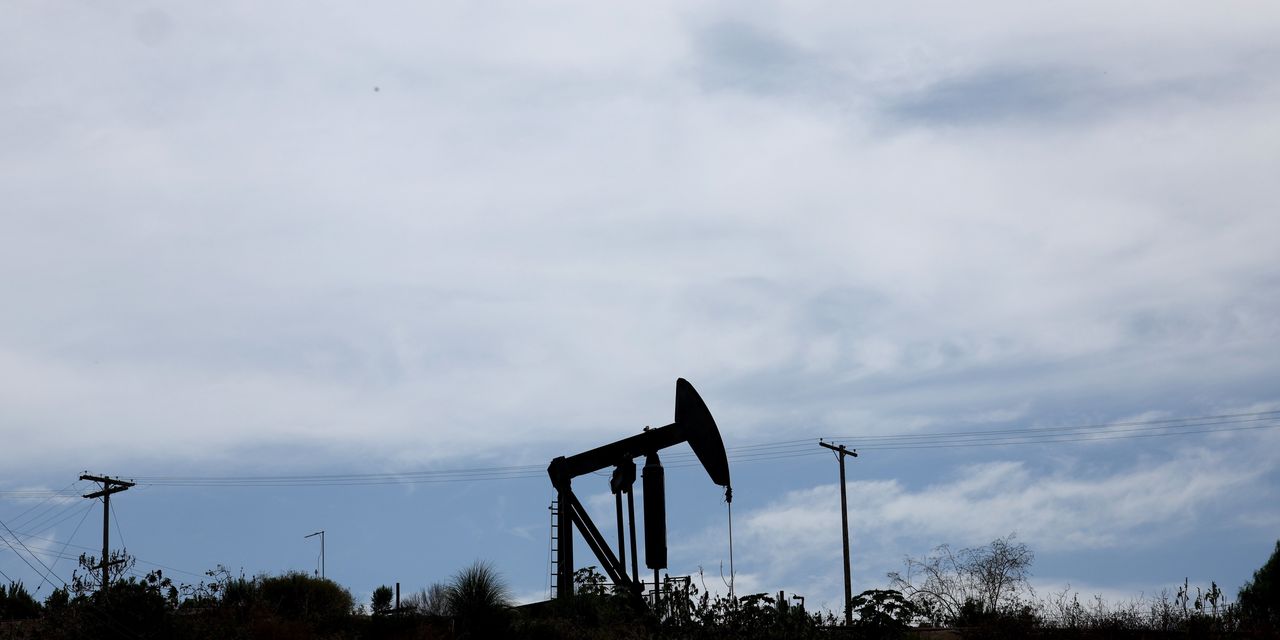Oil futures ended Monday on a mixed note, with U.S. prices posting a gain and global benchmark crude prices settling slightly lower.
The moves for oil came as investors assessed China’s latest efforts to bolster its lagging economy and monitored the potential threat posed by Tropical Storm Idalia to crude and product output and demand in the Gulf of Mexico region.
Price action
-
West Texas Intermediate crude for October delivery
CL00,
+1.37% CL.1,
+1.37% CLV23,
+1.37%
gained 27 cents, or 0.3%, to settle at $80.10 a barrel on the New York Mercantile Exchange. -
October Brent crude
BRNV23,
+1.24% ,
the global benchmark, inched lower by 6 cents, or nearly 0.1%, to settle at $84.42 a barrel on ICE Futures Europe. November Brent
BRN00,
+1.25% BRNX23,
+1.25% ,
the most actively traded contract, shed 8 cents, or 0.1%, to $83.87 a barrel. -
Back on Nymex, September gasoline
RBU23,
-0.18%
fell 2.8% to $2.80 a gallon, while September heating oil
HOU23,
+0.19%
declined 3.1% to $3.20 a gallon. -
September natural gas
NGU23,
-2.48%
added 1.5% to settle at $2.58 per million British thermal units. The contract expires at the end of Tuesday’s trading session.
Market drivers
Oil futures got a boost after China’s finance ministry and the country’s stock-market regulator introduced measures aimed at sparking buying interest in stocks, including halving a tax on stock trades and limiting sales by big shareholders in companies that haven’t handed out enough dividends.
Worries about China’s economy and its demand for energy had been pressuring prices for oil, but the latest news helped to brighten the outlook for oil demand from one of the world’s largest consumers.
Meanwhile, Tropical Storm Idalia formed Sunday in the Gulf of Mexico and was on a potential track to come ashore as a hurricane in the southern U.S., the National Hurricane Center said.
For the crude-oil market, while the storm may disrupt some operations in the Gulf of Mexico, “the track so far looks like it will be more of a threat to demand than it will be supply,” Phil Flynn, a senior market analyst at the Price Futures Group, said in a Monday report.
“The potential short-term demand destruction and the fact that we’re going into shoulder season [for demand] could overshadow the wildly bullish fundamentals that underpin the oil and products markets,” he said. “We continue to believe that there’s a significant upside risk for prices going into winter and try to take advantage of any short-term weakness to put-on long-term hedges.”
Meanwhile, Citgo Petroleum Corp. and Florida officials warned on Sunday that fuel sold at stations supplied by Citgo’s Tampa, Fla., terminal may be “contaminated” with diesel fuel.
Read: Tropical Storm Idalia heads for Florida; Citgo fuel-contamination problem strikes first
Oil prices had climbed Friday but booked back-to-back weekly declines after a string of seven straight weekly advances. Crude had seen a lift as Saudi Arabia implemented a production cut of 1 million barrels a day in July that’s due to run at least through the end of September.
“Oil trading volumes show an unusual fall since July when compared to volumes traded in the past two years. That’s partly due to weakening demand fears and falling gasoline inventories, but also due to tightening oil markets as a result of lower OPEC supply,” Ipek Ozkardeskaya, a senior analyst at Swissquote Bank, said in a note.
“We know that the demand will advance toward fresh records despite weak Chinese demand. We also know that OPEC will keep supply limited to push prices higher,” she wrote. “Consequently, we are in a structurally positive price setting, although any excessive rally in oil prices would further fuel inflation expectations, rate hike expectations and keep the topside limited in the medium run.”
Read the full article here








